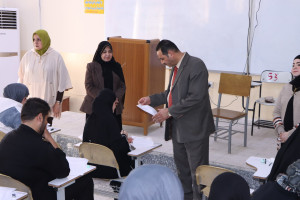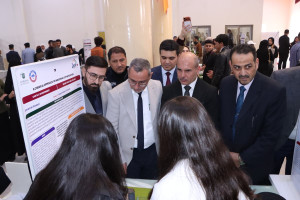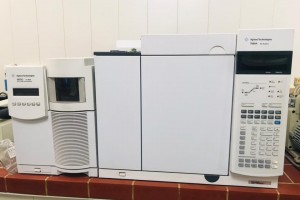
The College of Education for Pure Sciences, Department of Chemistry, University of Basra, discussed a doctoral thesis on the design of a microfluidic system for the spectroscopic determination of some ions in pharmaceutical preparations.
The thesis presented by the researcher (Ehsan Ashour Makshaf Al-Asadi) included the current study (designing a microfluidic system for the spectroscopic determination of some ions in pharmaceutical preparations) three chapters. The first chapter included a general introduction explaining the principles and advantages of the microfluidic system. It also contains some details about microcontrollers that are used in automated analysis. The principles and components of syringe analysis systems have been presented.
The second chapter included the chemicals, devices and methods used in this study, and the local microfluidic system was explained in detail, which is locally made components and programs.
The third chapter included the results and the outcome and their discussion in four parts: The first part represented by using methylene blue to evaluate the work of the locally designed device with a wavelength of 665 nm, where the correlation coefficient for five concentrations and under optimal conditions was 0.9995. The relative standard deviation factor of ten points was 0.286 with a detection limit of 0.001 μg/ml, and the dilution factor for the designed system was 1.0.
The aim of the thesis
Designing and building a fully automated microfluidic system using the spectrophotometer as a detector for the locally manufactured system from materials available in the local market and using methylene blue to calibrate the designed device.
Manufacture of a Micro peristaltic pump controlled by Arduino microcontrollers.
Using other microcontrollers that act as a data logger to record the analog signal and convert it into a digital signal on the computer to be drawn using Microsoft Excel 2016.
Micro-Chip design of different sizes and shapes.
Use of a device designed for the spectroscopic determination of zinc, iron and magnesium ions binary in pharmaceutical preparations.
or conclude the thesis
Building and designing a completely autonomous microfluidic system for the first time in our university laboratories by using acrylic microchips for the determination of magnesium, iron and zinc binary ions in pharmaceutical preparations.
Manufacture of micro-pumps from materials available in the local market, which have different speeds as they are controlled by Arduino micro-controllers.
Processing the data represented by the analogue signal and converting it into digital signals that is easy to process using a microcontroller called Data logger and draw it on the Excel 2016 program.
The designed system was characterized by its high sensitivity.
The locally made system used very few volumes, which made it a friendly system to the environment in terms of waste disposal consisting of the use of samples and reagents.
recommended thesis
Ease of designing completely self-contained systems from cheap materials and available in the local markets.
The possibility of using systems designed in most areas of automated analysis compared to other diagnostic devices such as fluorescence, spectrophotometry, and others, at very reasonable prices.
Possibility of using acrylic microchips to mix reagents and samples with multiple channels.
The possibility of controlling the reaction time of the reagents and the size of the samples through the use of the locally designed micro-peristaltic pump program.








